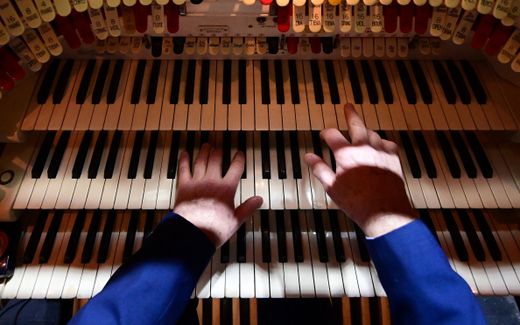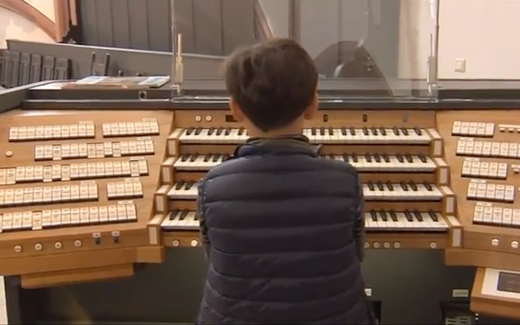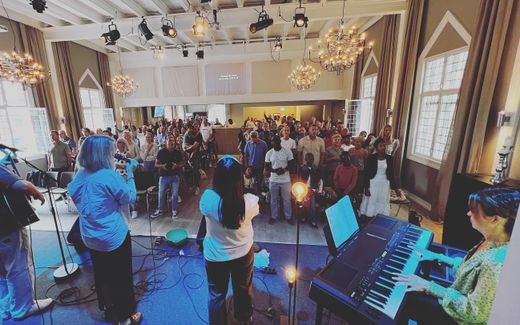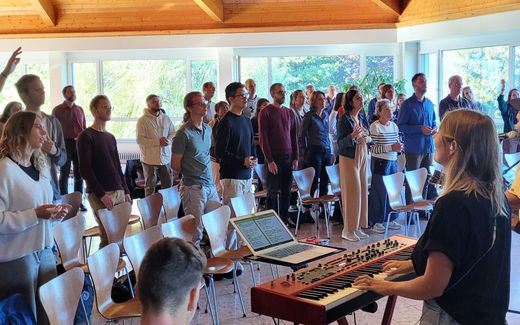Robot Organola replaces German organist
28-07-2023
Central Europe
Jaco van der Knijff, RD
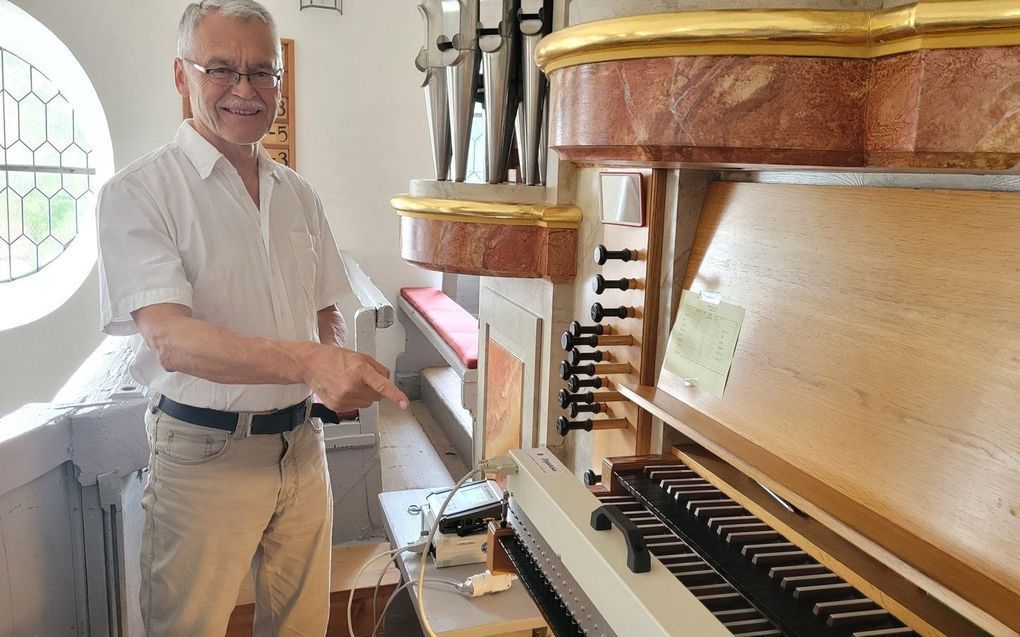
Pastor Thomas Pfundner with the Organola robot in the church of the German town of Holzschwang. Photo EPD, Dagmar Hub
Central Europe
What do you do when the only organist of the congregation becomes too old, and there is no new generation to operate the keys? In the German town of Holzschwang, technology offered a solution.
Robot Organola took over the work of the organist. After sixty years, the organist of the Protestant Lutheran Georgskirche in Holzshwang (Bavaria) quit his job a few months ago. The 88-year-old Hans Stumpp found it harder and harder to fulfil the services in the 500-year-old church building. Therefore, he retired. But a successor who could play on the three keyboards of the church organ was nowhere to be found, much to the dismay of the pastor of the church, Thomas Pfundner.
However, instead of singing without an organ or using CDs during the church service, Pfundner pulled off a trick. He employed an engineering company, Klaus Holzapfel, from Reistingen. The company made a design for an organ robot. “Organola” is the name of the invention: a long-shaped machine that has the same width as the keyboards of the organ. It contains a computer, which is easy to operate. The pastor can select the hymns from the “Evangelisches Gesangbuch” at home and save them to a USB which can be plugged into Organola.
Thus, the “digital church musician” can play for a whole service: all hymns, even when the congregation sings more than one stanza. But also the preludes, even though they are much shorter than when Hans Stumpp sat behind the keyboards. The technique, therefore, allows the churchgoers to still hear the sounds of the “marvellous instrument” of Sandtner from 1984 in the Georgskirche, says Pfunder in an article on Evangelisch.de. According to him, churchgoers have to be very smart to hear that no human being is operating the organ.
At the same time, the robot has its disadvantages, the pastor acknowledges. “Organola” only operates one keyboard. And even though it is double-manual, this leads to some limitations. Also, the pedals remain untouched. Therefore, the churchgoers will have to do without the “bassoon 16’” for a while. In addition, antiphony, where the pastor and congregation sing to each other, is also something of the past for now.
But in general, pastor Pfundner mainly focuses on the benefits. “Organola” is very precise – he has not heard any mistakes yet. And another advantage: the machine can also play in services of the other church building of the congregation of Holschzwang/Hausen, in the Ulrichskirche in Hausen. Hans Stumpp had done the same during his time as an organist. The keyboards of both organs have the same width of 80 centimetres.
And there is another benefit, says pastor Pfundner. The cost to create “Organola” is about 8000 euros. That is the amount a human organist would earn over two years. After the third year of use, the robot thus saves costs for the small congregation that counts about 600 members.
However, there are also critical voices. Musician Jörg Echtler writes in an article on Evangelische.de that he understands the emergency measure of employing a robot. However, he points the finger at the fact that organ playing in a church service is more than pressing keys.
The latter, a robot, can take over very easily. But a machine cannot do more than that. And exactly the essence of the work of a church musician is lacking, according to Echtler: the liveliness, the creative thinking process and the shaping of the music.
The musician fears that the growing shortage of organists in Germany, especially in smaller congregations, will lead to a drastic turning point. “When the real, independent church music disappears, it means an impoverishment”, he writes.
This article was translated by CNE.news and published by the Dutch daily Reformatorisch Dagblad on July 17, 2023
Related Articles

